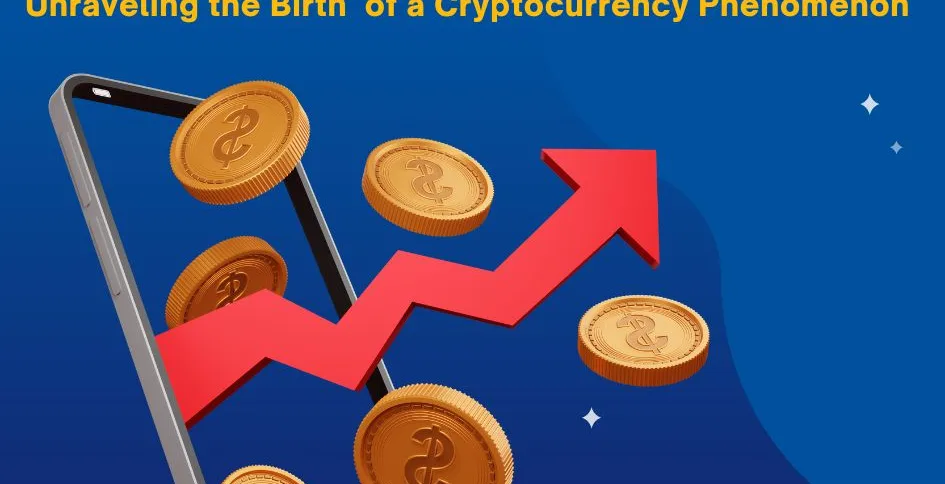
1. From Doge to Shiba: The Genesis of Meme Coins:
The story of meme coins traces back to the early days of cryptocurrency, with Dogecoin (DOGE) being one of the pioneers. Created in 2013 as a playful homage to the popular Doge meme, Dogecoin quickly gained a devoted following due to its lighthearted nature and low transaction fees. The success of Dogecoin paved the way for the birth of other meme coins, each with its own unique twist.
2. Community-Driven Development: The Heart of Meme Coins:
Unlike traditional cryptocurrencies, meme coins thrive on community-driven development. These coins often start as social media jokes or online communities that decide to create their own digital currency. The power of collective enthusiasm plays a significant role in the success of meme coins, with communities actively participating in governance, development decisions, and even marketing efforts.
3. Humor and Virality: The Secret Sauce:
The success of meme coins lies in their ability to leverage humor and virality. Memes have a way of spreading rapidly through social networks, and meme coins capitalize on this phenomenon. Catchy names, playful logos, and humorous narratives contribute to the virality, attracting a diverse audience beyond the typical crypto community.
4. DeFi and Tokenomics: Meme Coins with a Twist:
Many meme coins incorporate decentralized finance (DeFi) elements and unique tokenomics to set themselves apart. Tokenomics, or the economic design of a cryptocurrency, may include features like limited supply, rewards for holders, or decentralized governance mechanisms. These elements add an extra layer of complexity to meme coins, transforming them from mere jokes to intriguing experiments in decentralized finance.
5. Shiba Inu and Beyond: The Rise of Meme Coin Celebrities:
Shiba Inu (SHIB), inspired by Dogecoin and named after the popular Japanese dog breed, gained unprecedented attention in 2021. The success of Shiba Inu, along with other meme coins like SafeMoon and Hoge Finance, turned these digital assets into celebrities within the crypto space. Meme coins are no longer dismissed as mere internet jokes; they are now part of the broader conversation surrounding the future of finance.
6. Regulatory Scrutiny: Challenges and Controversies:
The explosive growth of meme coins has not been without its challenges. Regulatory scrutiny has increased as authorities seek to understand the implications of these unconventional digital assets. Issues such as market manipulation, pump-and-dump schemes, and potential scams have prompted regulators to take a closer look at the meme coin phenomenon.
7. Investor Caution: Due Diligence Is Key:
As with any investment, caution is paramount. While meme coins may offer exciting opportunities, they also come with high volatility and speculative risks. Investors should conduct thorough research, understand the project’s fundamentals, and be aware of potential pump-and-dump schemes that can artificially inflate prices.
8. The Future of Meme Coins: Speculation and Innovation:
The future of meme coins is uncertain but undoubtedly intriguing. As the crypto space continues to evolve, meme coins may either fade into obscurity or become integral players in the decentralized finance landscape. The innovation spurred by these unconventional projects could influence the development of more traditional cryptocurrencies and financial systems.
The birth of meme coins represents a fascinating intersection of internet culture, decentralized finance, and community-driven development. While these digital assets may have started as internet jokes,
they have evolved into a phenomenon that cannot be ignored. Whether you view them as a speculative trend or a revolutionary force in finance, meme coins have undeniably left their mark on the cryptocurrency landscape, challenging traditional notions of what digital currencies can be. As with any investment,
a cautious and informed approach is essential, but the meme coin revolution is undoubtedly a captivating chapter in the ongoing saga of cryptocurrency.
FAQ
Cryptocurrencies encompass a broad category of digital currencies designed for secure, decentralized transactions using blockchain technology. They include both mainstream currencies like Bitcoin and Ethereum, as well as niche or specialized tokens. Meme coins, on the other hand, are a subset of cryptocurrencies that often originate from internet culture, leveraging humor, virality, and community-driven development. While all meme coins are cryptocurrencies, not all cryptocurrencies are meme coins.
Cryptocurrency operates independently of traditional financial systems like banks and government-backed currencies. It uses decentralized technology (blockchain) to facilitate secure transactions and relies on cryptographic principles for security. Traditional finance, in contrast, refers to established financial systems governed by central banks, regulated institutions, and fiat currencies issued by governments.
Meme coins like Dogecoin (DOGE) originated in 2013 as playful nods to internet culture, specifically the Doge meme. These digital currencies gained popularity for their lighthearted nature and low transaction fees, setting the stage for the emergence of other meme coins.
Unlike traditional cryptocurrencies, meme coins thrive on community-driven development. They often start as social media jokes or online communities that create their own digital assets. This community involvement extends to governance, development decisions, and marketing strategies.
Meme coins like Shiba Inu (SHIB) have demonstrated the potential to gain significant attention and value within the cryptocurrency space. Inspired by Dogecoin, SHIB and others have become notable entities, challenging traditional notions of digital currency.
Cryptocurrencies differ from traditional currencies in two key ways:
Decentralization: Cryptocurrencies operate on decentralized networks, meaning they are not controlled by a central authority like a government or financial institution. This decentralization provides greater transparency and security through blockchain technology.
Digital Nature: Cryptocurrencies exist purely in digital form and are typically accessed through digital wallets. Transactions are conducted electronically, offering fast and borderless transfer of value without physical intermediaries like cash or bank branches.